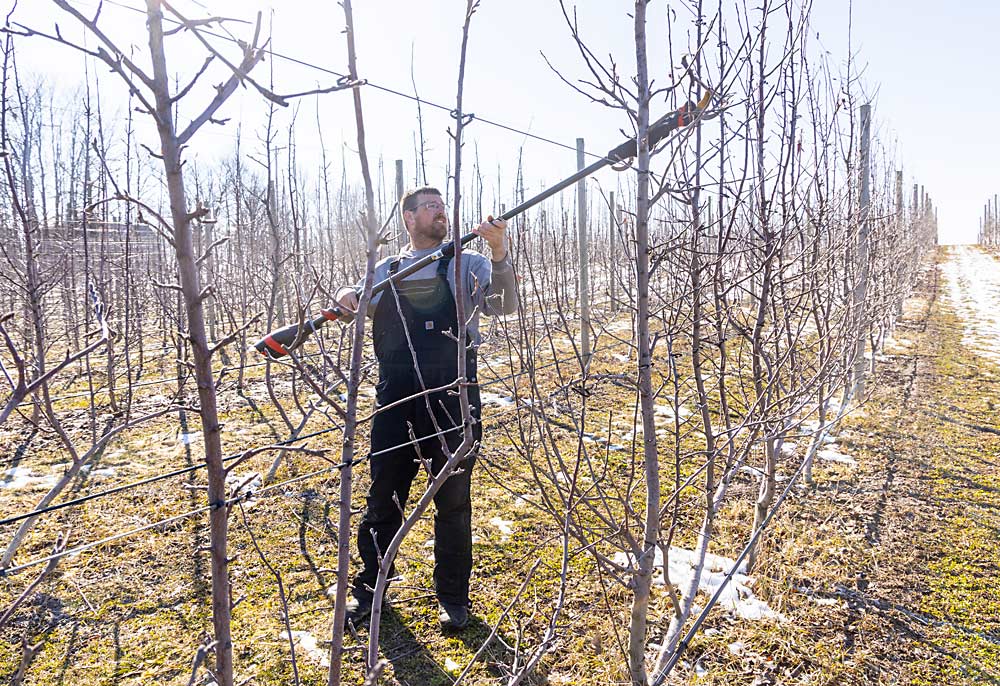
Could multileader tree training reduce the labor demand for Michigan apple production, or increase it? Several of the state’s growers are experimenting with such systems, including the Upright Fruiting Offshoot system, also known as UFO.
Nick Schweitzer, manager of Schweitzer Orchards in Sparta, talked about his farm’s UFO apple block during a panel discussion on multileader systems during the International Fruit Tree Association’s conference in Grand Rapids, Michigan, in February.
Schweitzer saw UFO cherries in New Zealand in 2017, during a tour organized by the Michigan Farm Bureau, and thought the system worth trying in apples. He saw the possibility of an easy, efficient system that’s amenable to mechanization. He noticed that pickers can reach through the canopy and pick both sides of the tree from a single row. It’s easy to teach people to prune and count buds in the UFO system, and its thin canopy leads to greater sun exposure and better color, he said.
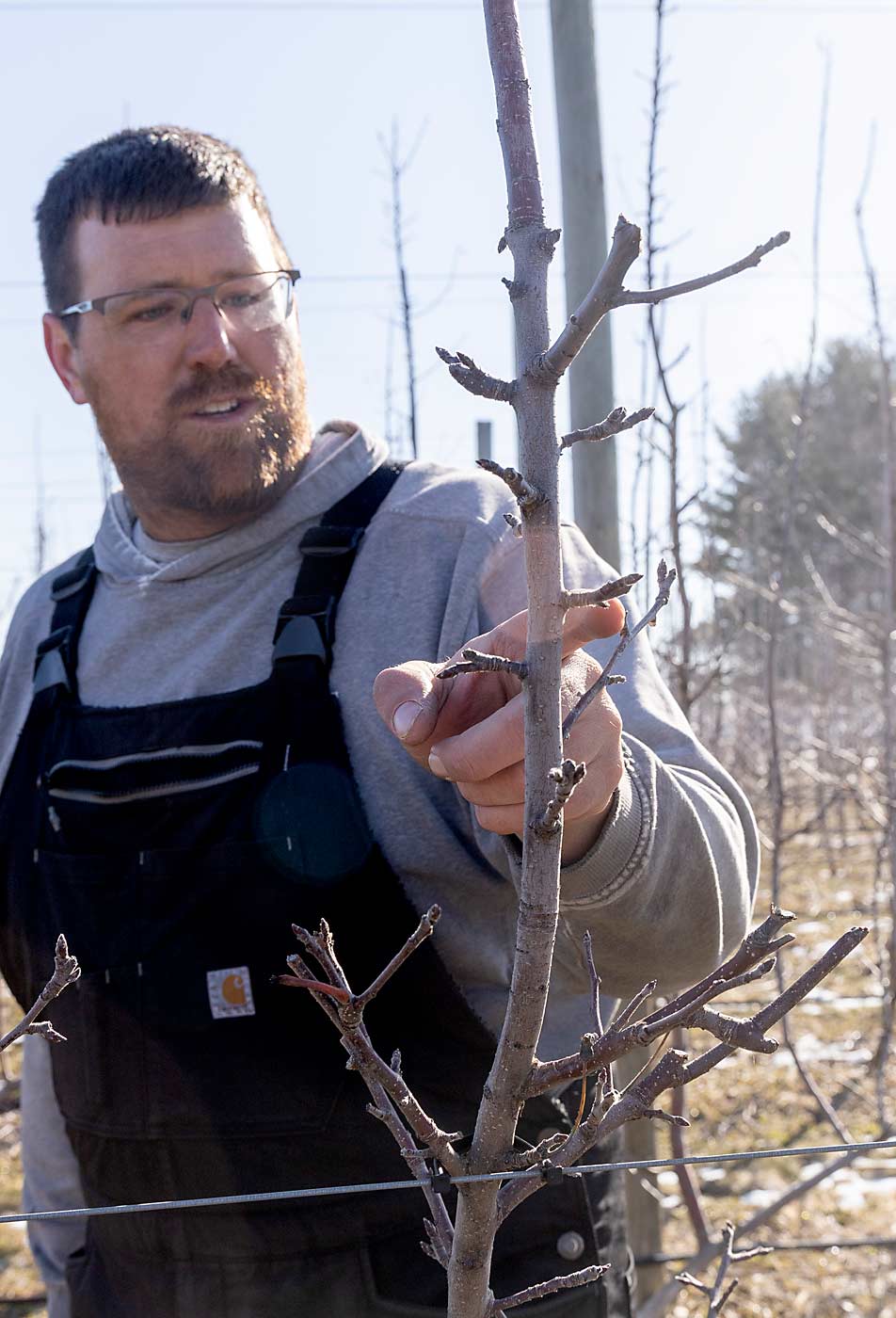
Establishing a UFO block is a lot of work, but Schweitzer thinks it will save on labor in the long run.
He planted six rows of UFO trees in 2018, two rows of Gale Gala and four of Fuji, all on Budagovsky 9 rootstock. He installed a seven-wire trellis beforehand. He spaced the UFO trees at 6 feet in the row and planted them at roughly a 45-degree angle to avoid bending or breaking the graft union. He tied the angled trees to the low wire (about 2 feet off the ground) to keep them at an angle. Then, he left six vertical leaders per tree.
Schweitzer said the B.9 trees haven’t filled space as quickly as he would like. He plans to plant another UFO block this year — 4.5 acres of Honeycrisp on more vigorous rootstocks like Geneva 969 and G.935.
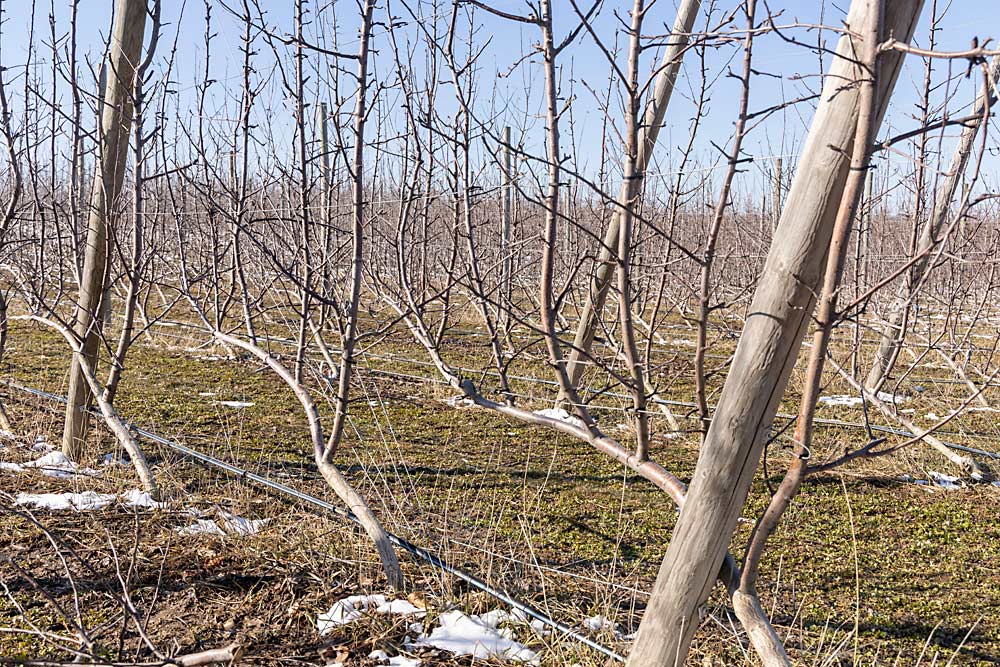
He made another discovery in New Zealand: Kiwi Klips. Instead of a permanent tie holding the tree in place during training, you can pop Kiwi Klips on and off, and easily slide them over.
To make a side-by-side comparison, Schweitzer planted a single-leader system at 3 feet by 11 feet next to the UFO block at the same time. That high-density block and the UFO block have been producing a small amount of fruit for two years but have yet to reach full production. Schweitzer plans to compare the two blocks’ production and fruit quality over the long run. He said the high-density block averages 1,320 leaders per acre; the UFO block 4,660 leaders. He’s still trying to figure out the ideal apple count per leader in the UFO block.
He noticed that the UFO block thins harder than the high-density block. That means less chemical is needed — but then again, a hard thin might take off more fruit than you want, he said.
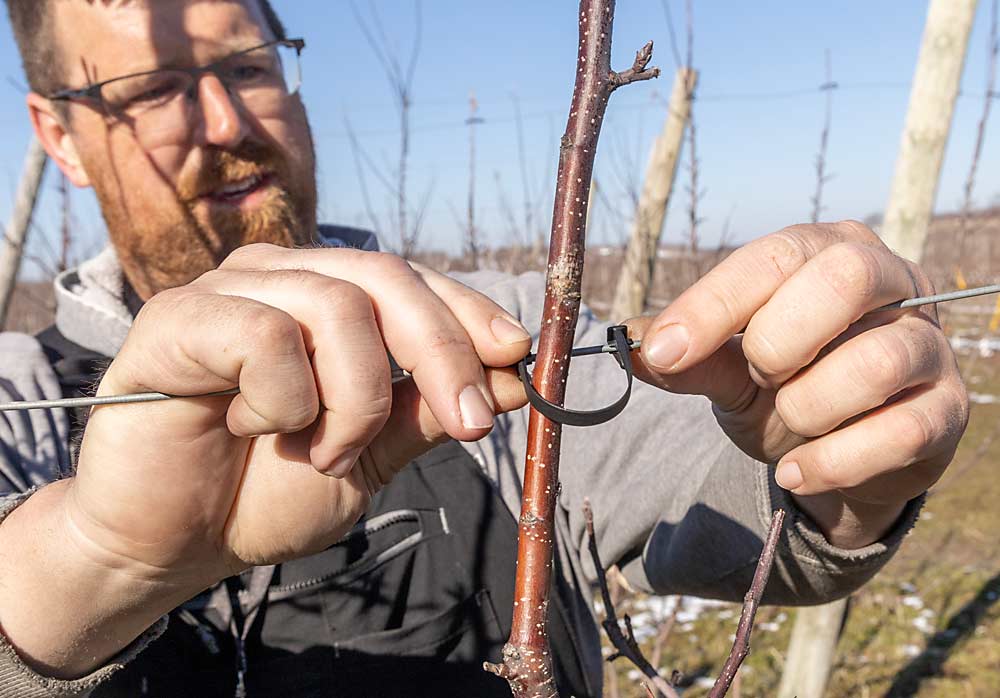
Grower Bill Nyblad in Kent City, Michigan, also discussed multileader systems during the IFTA panel. Nyblad’s preferred system is a double leader matched to an ideal rootstock for his soil type. He likes double leaders, also commonly known as bi-axis trees, in part because they can be productive by their third or fourth year.
Nyblad also has UFO-trained apple blocks, but his experience with UFO has been more about improvisation than any particular philosophy.
He planted four rows of Honeycrisp trained to UFO in 2016. His nursery order of double- and triple-leader trees that year included a handful of single-leader trees on G.30. He thought that rootstock was too big for his typical 12-by-3 system, so he laid the trees down at an angle, making sure to keep the bud union far from the ground to avoid scion rooting. He trained the branches to grow vertically.
Nyblad also planted modified UFO blocks in 2018 and 2019. He did so because he got some uneven double-leader trees from the nursery — trees with a small leader and a big leader. In 2018, it was Gala on G.935. In 2019, it was Honeycrisp on G.890.
When you order double-leader trees, a small percentage of the trees don’t grow exactly even, Nyblad said. In that situation, the nursery usually just cuts the small side off and gives you a single-leader tree. Instead, he decided to get creative, and told the nursery to keep the uneven double-leader trees as they were. When he planted them, he left the small leaders sticking straight up and trained the big leaders horizontally, creating a modified UFO.
Nyblad offered a mixed verdict on UFO apple trees. His 2016 UFO block has produced as much or more fruit than the rest of his blocks for the past two years. He’s happy with its production, but the UFO’s canopy took longer to develop than he liked. He said double- and triple-leader trees reach production faster. And the amount of labor involved in establishing, tying and training a UFO system makes it hard to manage on a large scale.
—by Matt Milkovich

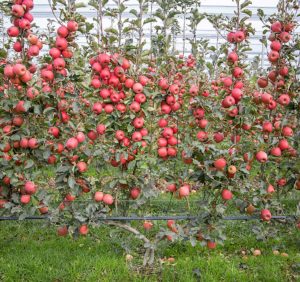





Leave A Comment